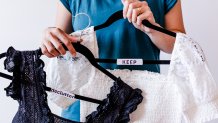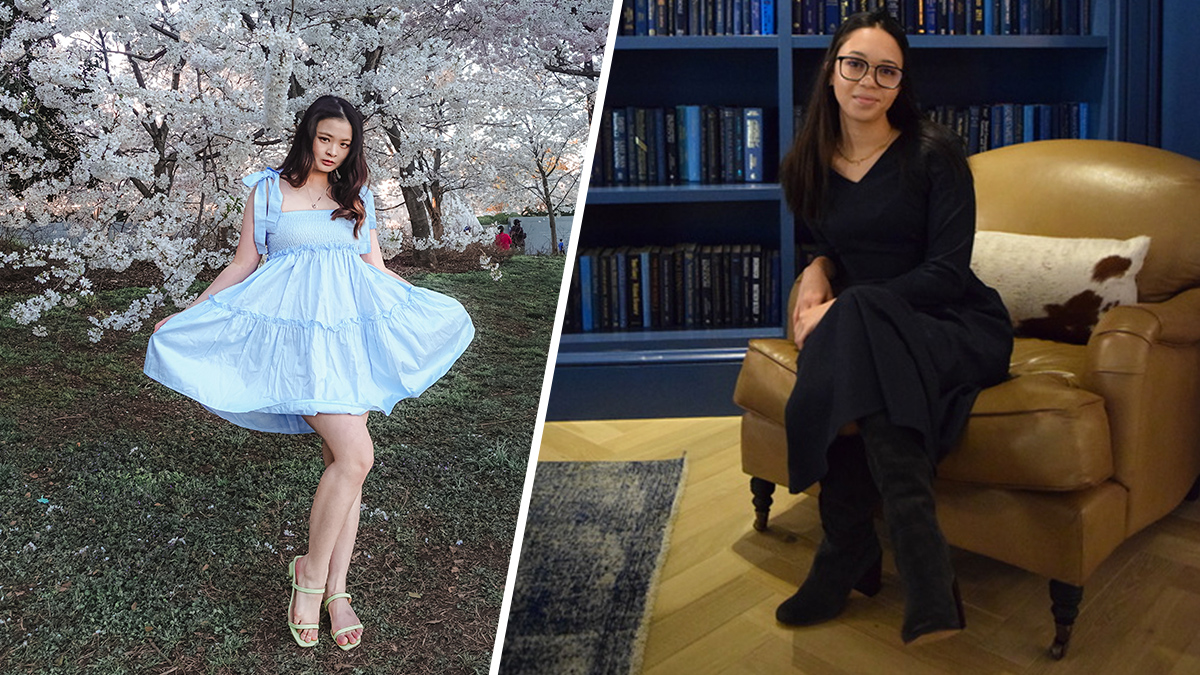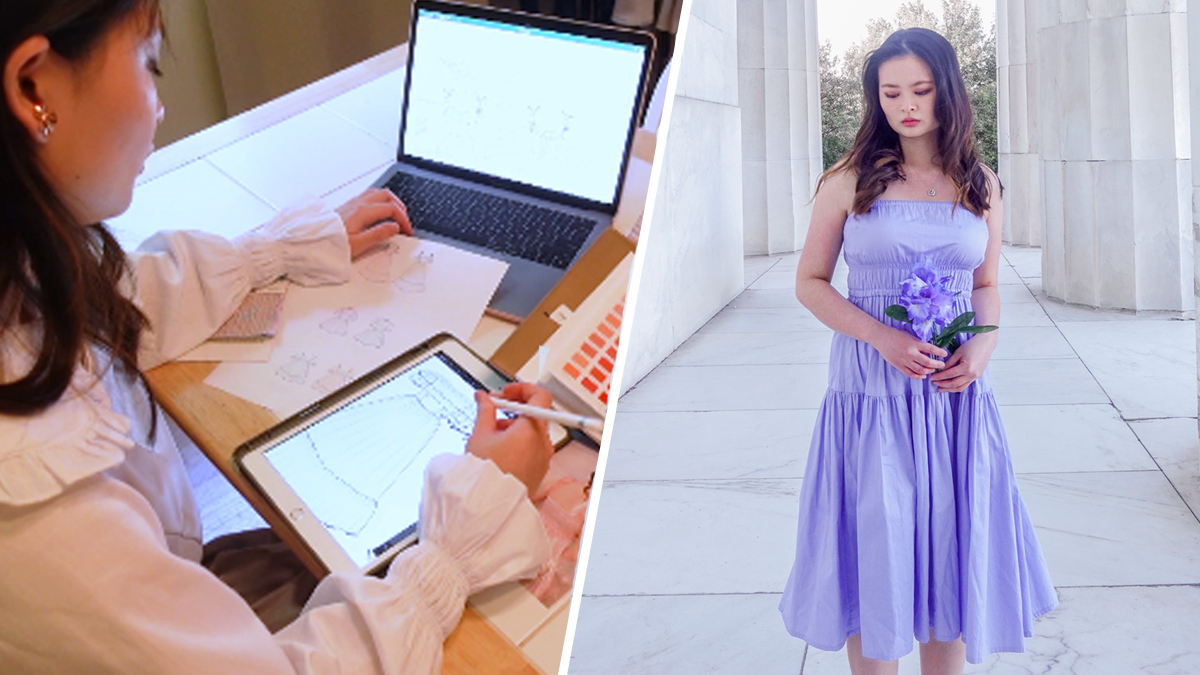When Nadia Tandra designs dresses for her Maryland-based brand, Lunelllery, she asks herself: "Will people wear and cherish the dresses we designed for a long time?"
This fall, Nadia launched the second collection for her sustainable and ethical clothing line. And she took News4 through the journey—from the design process through the official launch.
As a designer, Nadia said she combats textile wastefulness by using dead stock fabrics and producing a small quantity of dresses. As a business owner, she said she keeps her brand ethical by building a close relationship with a small team of garment workers based in Indonesia.
Nadia wants customers to build a connection with her garments instead of quickly disposing of them.
"With the rise of social media, trends come and go really fast, and people are just seeing clothing as disposable instead of garments that you can wear and cherish and wear for a long time," Nadia said.
As statistics show how fast fashion is contributing to landfills, Nadia and D.C.-area fashion experts shared how consumers can create a more sustainable wardrobe.
Mimi Miller launched her sustainable brand, Mimi Miller Womenswear, in 2015. Since then, she has seen her customers more open to embrace sustainability in their clothing.
"Trying to live a completely sustainable lifestyle, I think is very challenging, and I tell my customers— I think it's baby steps," Miller said.
Find Your Style, Don't Buy What's Trending
In her own closet, Nadia sticks to her established style, and she advises others to do the same.
"I think a big part of sustainability is not creating waste," she said. "Invest in pieces that you are sure you're going to wear down for a long time, like pieces that are timeless."
Most of the garments she buys have a clean design, without any patterns. Nadia purchases garments that have puffy sleeves or dresses that are mid-length that she can dress up or down.
"I really want people to see clothing as an investment, something that you can wear for a long time instead of disposable," Nadia said.
She advises consumers to ask themselves these questions before buying a new garment:
- What material is it made of? Fashion experts have said to stick to pure materials such as 100% cotton or 100% polyester.
- What is the brand's history or values?
- Can this be worn for a long time, despite trends?

Shop Your Closet
Janice Wallace, a D.C. sustainability expert in fashion and design, said that before you go shopping, start by looking at what is already in your closet. This will cut back on potential wastefulness that could end up in landfills.
"You'll be surprised how many people don't know exactly what's in their closet," Wallace said. "You really need to take stock of the things that you have."
She advises organizing your closet by item, and then by color, to make it easier to make outfits.
"When people walk into their own closets and they can easily make an outfit, they're probably going to be a little less likely to go out and buy something brand new because they see that they already have something in their closet," Wallace said.
She suggests unwanted items be donated to family members, charity shops or organizations that help people get back to work like Dress for Success or D.C. for Change.

Retrain Shopping Habits
Miller said sustainability is more than just the type of fabric clothes are made from, but also about consumers' consumption. It is about retraining shopping habits that we have to have more all the time, she said.
"Sometimes the having less can be just as good," she said.
In high school and early years of college, Miller said her closet was full. But now, the designer is more selective of what she buys.
"I buy a lot of like neutral colored pieces, things that I can wear all the time," Miller said.
Photos: Outfits by Mimi Miller
She emphasizes buying quality over quantity. She says that when consumers buy lower-quality clothing, they end up going through items faster. This contributes to tons of textiles in landfills every year.
"I personally would rather have three pieces that I really love, that fit me really well, that are going to last a long time—as opposed to 15 pieces that I sort of love, and they don't fit me quite right," Miller said.
Wallace advises consumers to think about other ways to use their money such as travel, dining or other experiences.
If you are still in need of new items, start with shopping at second-hand stores or on apps like Poshmark or Depop, so you can "add to your wardrobe responsibly," Wallace said.
"We need to expand our horizons outside of just the high we get from shopping. There's so many other ways that we can get that similar dopamine high other than just shopping," Wallace said.
This is part of a series of sustainable and ethical fashion in the D.C. area. Find the first part here.
The second part on how D.C. area designers are embracing ethical fashion can be found here.



